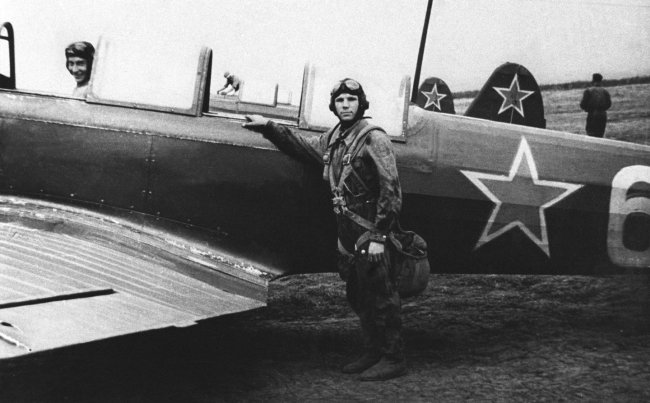
April 12th marks the 60th anniversary of the world's first manned flight into outer space. Yuri Gagarin, who flew around the Earth in 108 minutes on the Vostok spacecraft, opened the way to space for all mankind.
It is fairly believed that fighter pilots experience psychological and physical stress the closest to space flight. And to this day, many Russian cosmonauts come for training from the aerospace forces.
Gromov Flight Research Institute made a great contribution to the creation of display means and equipment for the cosmonaut's workplace. In 1960 the first simulator of the Vostok spacecraft cabin was created at the institute under the leadership of Sergei Darevsky. This simulator made possible to replicate space flight. The first Russian cosmonauts, including Gagarin, were trained and passed on this simulator exams at the Gromov Flight Research Institute.
Aircraft designers took part in all domestic aerospace projects. In the 1960s and early 1970s, the Mikoyan Design Bureau was developing the Spiral aerospace system, which consisted of an orbital aircraft with a rocket stage and a hypersonic booster aircraft. Subsequently, the main specialists working on the Spiral were transferred from the Mikoyan Design Bureau to the specially created NPO Molniya, where the Buran reusable spacecraft was developed. The team of the Experimental Machine-Building Plant, which was named after Vladimir Myasishchev in 1981, also took part in the creation of the space shuttle. The designers of the enterprise have developed a sealed module of the Buran's cabin with life support, temperature control and emergency rescue systems.
And already at the beginning of the XXI century, aviation specialists took part in the creation of Russian projects of aerospace systems: the Sukhoi Design Bureau and Central Institute of Aerohydrodynamics worked together with the Rocket and Space Corporation Energia named after S.P. Korolev on the winged version of the Clipper manned reusable spacecraft. Experimental Machine-Building Plant named after V.M. Myasishchev is currently actively involved in the project of the Fund for Advanced Research on the development of a reusable rocket unit of the Krylo-SV reusable rocket and space system.
Many tests of elements of rocket and space technology are carried out in flying laboratories. This happened most fully during the creation of the Buran orbiter in the 1980s. In particular, the MiG-25 and Tu-154 laboratory aircraft were used to test the ship's automatic landing system.
For the final testing of the final stage of the Buran's flight and its landing, including in automatic mode, a full-size analogue aircraft BTS-002 was built. Its tests were carried out in Zhukovsky near Moscow - at the Gromov Flight Research Institute together with the Experimental Machine-Building Plant named after V.M. Myasishchev. It flew for the first time on November 10th, 1985, piloted by Gromov Flight Research Institute test pilots Igor Volk and Rimantas Stankevicius. They were originally planned as the crew for the first manned flight of the Buran.

Photo: Aktug Ates / wikimedia.org
Aircraft are also used to train Russian cosmonauts. Flight training at the Cosmonaut Training Centre named after Y.A. Gagarin are being conducted on the L-39 trainer aircraft. On this aircraft, future participants in space flights even perform aerobatics, both simple - "turns", "dive", "slides" - and complex "coups", "loop", "oblique loop".
To prepare cosmonauts for work in zero gravity, IL-76MDK laboratory aircraft was created. In flight it performs a "slide" manoeuvre, on the upper section of which zero gravity conditions are created, albeit for a short time - about 25 seconds in one mode.
And of course, airplanes have been and continue to be used by the rocket and space industry as transport. After all, it was only by air that the elements of the super-heavy launch vehicle Energia and the glider of the Buran spacecraft could be delivered to the Baikonur cosmodrome: they did not fit into the dimensions by rail. For this Experimental Machine-Building Plant named after V.M. Myasishchev developed a unique transport aircraft VM-T "Atlant", on the "back" of which "oversized" were attached. Today, military transport aircraft are often used to deliver "delicate" vehicles - satellites and boosters.











